An Interview with “The Mayor of ICANN” Jothan Frakes
What’s in a name? If the name happens to be your brand name, trademark, licensed product, movie or book title, mascot, marketing locale, or your tagline or campaign theme, the name becomes a proxy for your identity, and an asset worth protecting. Failure to “defend” a trademarked name can result in an adverse possession claim that the mark has been abandoned.
If the name also happens to be a domain name, it carries with it the authority to represent the sum of your identity online. It becomes both the means to an end and an end unto itself, the point of entry to a publication, a storefront, a gallery, and the goal line. Your domain name, when entered into the address bar of a Web browser, triggers the user experience you have carefully crafted for your constituents and customers.
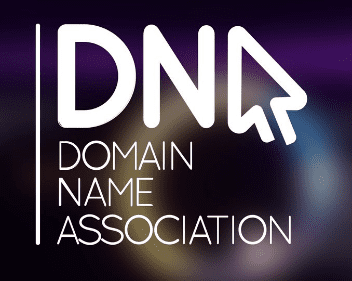
The name Jothan is a fine example. If you google the name of Jothan Frakes you will find that Jothan is the executive director of The Domain Name Association, a strategic and tactical expert in all things ICANN (the Internet Corporation for Assigned Names and Numbers), and an authority in top level domain names with more than 25 years of direct technical experience in gTLDs CCTds, and the Domain Name System (DNS).
As a global ambassador for domaining, Jothan has even been called “The Mayor of ICANN” for his leadership and guidance in mentoring his fellow netizens.
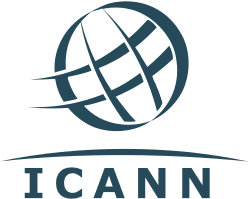
Not surprisingly, Jothan is also the proud owner of jothan.com. In an ironic twist of Internet fate, the name “Jothan’” has been commandeered on the search results page as a Knowledge Box by actor Jonathan Scott Frakes who is best known for his portrayal of Commander William T. Riker on Star Trek: The Next Generation. As names go, it’s a bit like the collision of Dr. Spock and Mr. Spock. Jothan still “owns” the majority of search result listings on the page. He even went so far as to pick up jonathanfrakes.com as a gift to his Star Trek counterpart.
In 2019, Seattle’s own Jothan Frakes can proudly pronounce that the city he has adopted as his home for the last 25 years has become the epicenter of the domain name universe.
Amazon, Google and Microsoft all manage their domain name groups from Seattle, and companies like GoDaddy, Tucows, Donuts, name.com, eNom, mmx, DomainTools, Mark Monitor, Com Laude and others all have a significant presence in Seattle. There are also a number of Seattle-area influencers in the domain name world, such as Michael Cyger of DomainAcademy, and Andrew Allemann of Domain Name Wire to name just two.
Zooming out to the larger Pacific Northwest, there are many more companies in the registry and registrar businesses, such as Top Level Design, and Webnames, as well as service providers, investors, and others directly engaged in working full time in the industry.
ICANN, the non-profit that oversees the stewardship of all the names and numbers on the Internet, will be holding its 72nd meeting in Seattle in October of 2021, convening thousands of people from hundreds of countries.
We asked Jothan to bring us up-to-speed on what is at stake in the art and science of domaining and how Website owners can best leverage the current state of play.
Seattle24x7: Welcome, Jothan! Tell us, when did YOUR name become a known entity in the world of domains?

Jothan: In the early 2000’s, I started up a conference called The Roundtable with a local company, Domain Tools, in order to help inspire, educate, and connect people with opportunities in the business of domain names. Since that time. I have launched a number of other conferences, including MERGE and NamesCon.
Presently, I have the privilege of acting as the Executive Director of the Domain Name Association, which is comprised of major companies across the domain name industry.
The world of top-level domain names has grown dramatically. Verisign recently reported that the overall global market for domain names has shot past 350 MILLION, and more importantly, the technology of DNS is so robust and flexible that there’s still room to grow and innovate.
Seattle24x7: What first attracted you to the world of domaining?
Jothan: I think it was the opportunity to invest my time and energy in something that offered a meaningful return at so many levels.

I just saw that voice.com sold for $30M this week, which is a record for a domain-only purchase. The number of transactions in the secondary market is continuing to grow and it may be that this is only the start. It was not at that scale when I first got into it, but I started to notice how many opportunities were there.
What was even more amazing was the things one could do with a domain name, and how they made it simpler for humans to get to what they were looking for. For the registries, the registrars, and the registrants, there was a slice of opportunity for each of them.
Seattle24x7: What is the gravitas of domain names today both in terms of branding and marketing and in terms of semantic search and today’s search engine algorithms?
Jothan: A “new normal” for domain names occurred after 2012. The namespace of the Internet has undergone a massive transformation, and the available options have expanded by hundreds of new options.
Some large corporate brands like Microsoft, Google, Apple or KPMG actually acquired rights to operate their own top-level DotBrand. So you’ll see home.kpmg or blog.google or other names that contain the branding of the company to the right of the dot.

Different cities like Berlin, Vegas, Miami, NYC and Boston were some of those that acquired rights to “Dot City” ‘GeoTLDs’ which work well for local presence and reach into those markets.
Domain names are available now in a variety of languages, such as Indian languages like Devanagari or Tamil, as well as Chinese, Thai, Korean, Vietnamese, Laotian, Hebrew, Japanese, Greek, Cyrillic, or Arabic, to name a few.
There are also very specific categorizations of terms that are well suited for new online projects, from .BLOG, .CLUB, or .LIVE. New names like .BEER, .VODKA, .BAR, or .VIP identify for specific purposes, and there are other groups or categories – literally hundreds of them – now available at most registrars.
The world also has many specially purposed Country-Code Top Level Domains (ccTLDs), like .IO, .ME, .CC, .FM, .AI or .CO which are a popular choice, as are the specific country domain names like .NL for the Netherlands, .UK for the United Kingdom, or .NZ for New Zealand.
Seattle24x7: It would appear that this has opened up a diverse range of opportunities for marketers?
Jothan: Many of the newer gTLD options have fewer registrations in them and thus higher availability of descriptive terms that are well suited for a particular purpose.
A good example would be the story of when a partner and I started the MERGE conference. We registered merge.show for the event, but we also registered mergeshow.com to accommodate habitual behavior.
We also had the opportunity to leverage different TLD choices for a specific purpose, such as merge.promo or merge.deals for promo code offers or merge packages.
Seattle24x7: This seems to dispel another myth, namely that domain names are one-to-a-customer. There are very good reasons to use multiple domains.
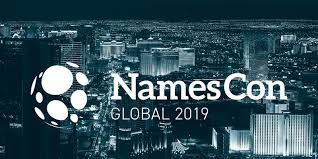
Jothan: When I was launching NamesCon in Las Vegas back in 2013, we used NamesCon.vegas as the URL, and this was magnificent because it eliminated the, ‘Oh, neat, where will it be?’ questions. Another benefit was that it inspired a second look on the business card, because it was new and interesting. And, yes, we also used namescon.com.
Seattle24x7: So the dot-com top level domain is still a mainstay?
Jothan: Between mergeshow.com and merge.show, the latter domain name is shorter by a few characters. However, those three characters are currently crucial because they are an almost involuntary action by Internet users. Typing C-O-M at the end of websites or email addresses is currently a conditioned behaviour. .COM is still the most widely registered domain name extension, but newer generations are more open to the expanded variety.
Seattle24x7: There are a number of sites that can help you choose a domain name by starting with keywords as stem terms. What online resources do you like for exploring and selecting a domain name?
Jothan: Often, the first or second choices for a domain name are taken, so some name suggestion tools offer options which are available for registration and get creative about the names that are provided to users. Some tools have visibility into a deeper inventory and list some of the options that are registered but might be located in the secondary market.
Each registrar has a bit of a ‘special sauce’ that they use for this, and there are naming tools that will spin domain name suggestions that are exceptional to help with this process. I am a co-inventor on a few patents for name suggestion or spinning domain names, so I really tend to nerd-out on this stuff, but Hexonet.domains does a good job of it, as do 1&1, Name.com, 101 Domain, DynaDot.com, GoDaddy and other registrars.
Some tools have visibility into a deeper inventory and list some of the options that are registered but might be located in the secondary market.
Systems like domainr.com, DomainsBot, NameMesh, Impossibility and Dot-o-Mator are good.
There are also businesses that support the new brand process by making innovative domain name choices, and then showcasing those as turnkey brands, developing logos and presenting a visual to the potential registrant. Examples would be: brandpa.com, brandbucket.com, and brandroot.com.
Seattle24x7: Realistically, how many domain name extensions should a business own if their name is trademarked? Just the .com? The .com, plus .net, .org, .info, .us?
Jothan: This is going to depend upon the individual use case. There are a number of factors to consider. There are different extensions now available that are vertically focused categories which might be relevant to your business that could make sense, that are there to help create better connection to the contents subject matter and other aspects of a company’s website.
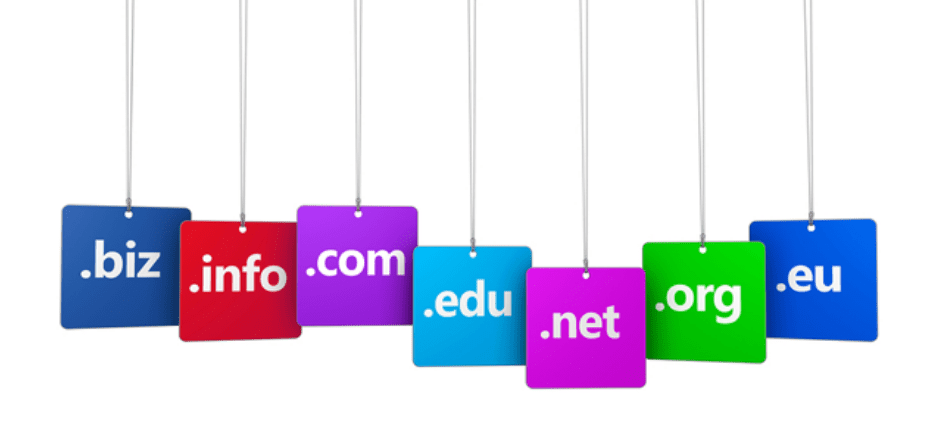
Some will make good sense, some won’t. It is exciting to explore some of the new namespaces, because you can find a lot of available names that might perfectly fit your idea as a new venture.
There are those who have existing brands that could benefit from a review of some of the new namespace to fortify their position in vertical markets.
For example, concert.events or concert.live might be great for a company that puts on concerts. Explore those options through the optics of what the purpose is. While those are great, concert.realtor may not make as much sense, so take some time to do some curation.
Budget is also a consideration. Use some pragmatism. concert.com may or may not be available, but if it is, it will likely be a very significant price on the secondary market. It might be the case that a keyword com domain is a means to fortifying (or establishing) a strong presence in a market where the cost of acquisition makes good sense.
Used correctly, the approach used extensions can amplify the brand and traffic or protect the overall brand name online.
Seattle24x7: What is the right way to manage a parked domain? As a forwarding agent without content? As a separate content page optimized for targeted keywords?

Jothan: Using 301 redirects to a primary website, or having a specific keyword page as a lander, or using a combination of these to help users find content deep-linked in a website are the most common techniques used. And they can be very effective.
Just be thoughtful about including planning and the proper redirection of domain names and their pathways when considering redesigns or website changes later, as these are commonly overlooked by companies.
Seattle24x7: If using the “rel=canonical tag,” is there any advantage to having multiple “landing pages” with multiple domains?
Jothan: The rel=canonical tag is something that helps identify unique pages, differing from how a 301 redirect works as a raw redirect.
I always recommend working with SEO savvy experts (Ed. – Like SearchWrite.com) to craft the right approach in unison with a domain strategy, in oder to extract the best benefit from domain names.
Experts will tell you that the TLD is or is not a factor in search engine ranking. I see that it is, but I think that is most often the case where there are additional factors like rel tags, sound meta tags and content that is presented with relevance to the keywords being searched.
Seattle24x7: IANA distinguishes the following groups of top-level domains. Can you tell us something we would be surprised to learn about each?
Infrastructure top-level domain (ARPA)
Jothan: ARPA plays an important role in the IN-ADDR reverse lookup process that lets an IPv4 address assign a hostname. Some current or future algorithms factor this for unique addresses.
Generic top-level domains (gTLD)
Jothan: There are hundreds of new gTLDs that have been introduced to the Internet in the past 5 years. There are new sub-categories of gTLDs now. Geographic, IDN, DotBrand, Community Strings, Closed and Sponsored types that now exist
Restricted generic top-level domains (grTLD)
Jothan: .BIZ, .NAME, and .PRO are labeled as ‘Restricted’ but these are essentially not restricted at all.
Sponsored top-level domains (sTLD)
Jothan: .POST was a domain name that was allocated in 2005 but didn’t launch until a decade later, in the midst of the hundreds of 2012 applications.
Country code top-level domains (ccTLD)
Jothan: These are NOT managed by ICANN. Some country codes have established some framework letters that outline some accountability agreements, but the level to which these are actually enforceable has not been tested.

Gratefully, the majority of Two Letter codes are identified by the ISO3166 table. There are a few which don’t exactly follow the ISO. For example, the ISO states that Great Britain is .GB, but this is not used, as .UK was adopted prior to the formal process of identifying what countries’ qualifications are to obtain a string.
Many countries are obtaining IDN versions of their code to support the spoken or written languages. .CN (China) for example has also .XN–FIQS8S, which becomes <.CHINA> or .中国 and Thailand, Russian Federation, India, EU, Korea, Israel, Bhutan and many other countries have these in local languages.
Test top-level domains (tTLD)
Jothan: There were eleven test top level domains that were added to the root in 2007 as <example>.<test> in a variety of languages, in order to test the facilities of the DNS resolution system. This was done in preparation for the later delegation of IDN Country Code TLDs as described above. They have since been removed.
Seattle24x7: How has the adoption of the plethora of new gTLDs been going?
Depending upon the measurement used, there are approximately 25 million domain names registered under new TLDs. Clearly, there was an appetite, but while some of them are crossing the horizon of 5 years in operation.it is early on in the adoption of these strings.
Time will reveal the best measure of the success of the strings, but it is still very early. I often remind people that it would be a challenge to see a pro athlete’s true potential at age five.

Seattle24x7: By the numbers, which of the new crop of specialty gTLDs have attracted the most business?
Jothan: Numbers need some context. it is tempting to look at zone file sizes and use that as a measurement of volume, because those can be downloaded and analyzed as publicly available data. Sales figures and other, better measurement or metrics are typically proprietary or confidential. Registration volume is not always the best measurement, as new registration price promotions can cause wild swings in those numbers.
The industry looks more closely at Alexa top sites, Google indexed site counts, and other metrics to make better determination of numbers.
By those measures, domains by Google in .APP, Radix’s .ONLINE and .SITE, Donuts’ .LIVE, .CLUB and the new .ICU are doing quite well.
Seattle24x7: Moldova is an interesting case of a country that has commercialized its country code .md to sell to the medical profession? Are there other examples of country codes that have been re-marketed this way?
Jothan: The use of .MD for the medical profession is a clever use, and .TV, or .FM come to mind immediately as examples that are similar.
We see more and more use of ccTLDs generically — .TO, .CC, .IO, .AI, or .CO are also other good examples of where ccTLDs are being used in a context that is non-geographic. Optimizing characters for links in social media such as bit.ly does get into creative domain hacks.
Seattle24x7: What is the best advice for choosing a Registrar? Have Registrar services become commoditized or are there certain advantages to be considered in their selection?

Jothan: The features and support as well as cost are the largest factors expressed by registrants in recent surveys. Another factor will be geography. It may not play as strong a consideration now, but the Internet spans country borders, and where your registrar is located may impact your rights as well as obligations.
Price is often an incentive – and many TLDs work with registrars to offer discounts on the first year of registration to help get that new project or idea off the ground.
Security, features, support, and the capabilities of the registrar are also factors that someone should take into consideration.
Seattle24x7: What is the actual advantage to choosing a privacy option when registering a new domain?
Jothan: With the introduction of GDPR into the mix, registrars and registries have been thrust into a potentially business-ending set of fines. For some, these laws conflict with ICANN policy and contractual requirements on registrars and registries, so this is being worked on, but it is not coming quickly because it is complicated to solve. While that is being sorted out, much of the WHOIS system has become redacted, so the result is that privacy is essentially enabled on most registrations.
As far as the advantages of the choice to use privacy, this is going to vary upon purpose. To me as an individual registrant, if I publish my info into the WHOIS, I notice that the telemarketing kicks in immediately on the phone number provided. I don’t know many who enjoy that nonsense, and it doesn’t happen when privacy is used.
For many businesses, though, the ability for a consumer to validate that it is really your company as a legitimate organization may require some means to lookup the domain in WHOIS. Or, in some cases, a registration might reveal competitive Intel that you might not want to reveal, and WHOIS privacy can shelter that.
For individuals, privacy may be the best option. It all depends upon circumstance, the purpose of the domain name(s) and their specific use.
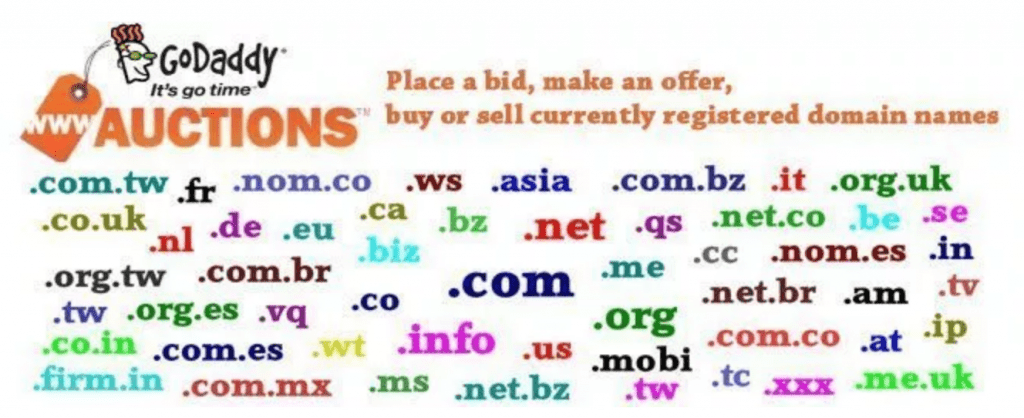
Seattle24x7: GoDaddy has become a kind of “market maker” in assigning a market value to a domain, presumably in the interest of brokering the sale of the domain? Have you found their market appraisals to be accurate? Is a GoDaddy valuation the appropriate benchmark of a name’s worth, or should the price be set based on the particular need or usage at the time?
Seattle24x7: GoDaddy has a large aftermarket platform. Their scale is such that they are a multiple in size larger than their next largest competitor by volume.
As part of their system, GoDaddy has a fairly well computed appraisal value per name for many of the listing styles on their aftermarket. The art of appraisal is a challenge in the aftermarket and secondary market, as the real value of something is what it is worth to a buyer, and domain names are all distinct, so these are a challenge to nail perfectly.
Value can often be a range, and I think a specific appraisal purpose might also drive what the amount is. It is really important to keep in mind that these are suggestions.
Using real estate as an analogy, the value an appraiser a places on a home for insuring it, as opposed to what a tax assessor might, or what a realtor suggests could all be different under reasonable circumstances. Ultimately, the agreed sale price is the actual measurement of what a domain name is worth.
With domains in the GoDaddy marketplace, estimates are a metric to take into consideration – but a buyer typically pays much lower than the appraised price that they list.
GoDaddy, in my opinion, provides a number as a data point for a buyer to consider, but the buyer should always make their own assessment.
Seattle24x7: What other resources exist for assessing the value of a domain name?
Jothan: There are other appraisal systems for domains which might provide a higher or lower estimated value for a given domain name, such as Estibot.com or sites like namebio.com that track comparable sales. Still, even if you science the heck out of all the numbers, the value to the buyer on a given name is the overriding factor.
Domain names, especially the right ones with the right approach and usage, are very valuable.

Seattle24x7: Lastly, how will the Internet of Things (IoT) and the advent of Chatbots and Progressive Web Apps, all of which raise questions as to using IP addresses vs. names, affect the use of domain names? Will domain names be challenged by these alternate methods of addressability?
Jothan: As Executive Director of The Domain Name Association, I have the opportunity to see a lot of the innovation and potential of Domain Names, and I bring my experience and technical background to the role. It is a great group of some of the best of the best in the domain name industry, and we’re working together to help elevate the benefits and value of domain names while innovating in a trusted technology space.
One of the fantastic benefits of domain names and why they will remain valuable and essential is that their core use for humans was as a speed dial to reach IP addresses of servers or other resources.
So humans access Google to search for cat videos by typing google.com instead of 172.217.14.238 (or worse, with IPv6 it is 2607:f8b0:400a:803::200e) – try remembering that IP address and typing it in.
Mobile devices and apps still rely on domain names for resources related to their apps. The user does not see the domain names being put to work. What users will see, though are that those apps or systems will have a support forum, customer service, or at very least, a company website for the developer.
Going deeper, let’s look at some of the new technologies like home automation. Many consumer devices have some form of cloud access and gateways to access them from mobile devices or other means.
The explosion of IoT home automation, family networks, hybrid work clouds or personal VPN to general consumers means accessing them needs to be uncomplicated. Most routers provide the ability to use a dynamic DNS provider, which updates the IP Address within a domain name used to access the devices or network when your ISP changes the IP Address. This lets people access it via a domain name, and not need to update it each time.
It can be as simple as just accessing your router and home LAN, or deeper, like using personal VPN to access the devices within the network. Dynamic update providers allow users with home network resources that they want to access remotely
Where Web Apps are concerned, the ability to spin up virtual scaling on systems like Azure, AWS, Google Cloud, Rackspace, GoDaddy and other providers means developers use domains to access the web services they create.
The flexibility of domains means that the DNS infrastructure will continue to be a large area of growth. [24×7]


















